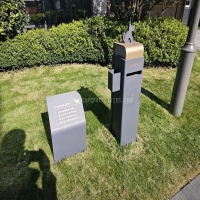Welcome to the website for landscape facilities products and knowledge.
What are the key considerations for integrating the bin into a smart city infrastructure?
Integrating waste bins into smart city infrastructure requires careful planning to ensure efficiency, sustainability, and scalability. Here are the key considerations:
1. IoT Sensors and Connectivity: Smart bins equipped with IoT sensors can monitor fill levels in real-time, optimizing collection routes and reducing operational costs. Reliable connectivity (e.g., LoRaWAN or 5G) is essential for seamless data transmission.
2. Sustainability and Design: Bins should be made from durable, eco-friendly materials and designed to encourage recycling. Solar-powered compactors can further enhance sustainability by reducing waste volume and collection frequency.
3. Data Analytics and Integration: Collected data must be integrated into a centralized smart city platform for actionable insights. Predictive analytics can help anticipate waste generation patterns and improve resource allocation.
4. Public Engagement: Educating citizens on proper waste disposal and the benefits of smart bins is crucial. Mobile apps or gamification can incentivize participation and improve compliance.
5. Scalability and Maintenance: Solutions must be scalable to accommodate urban growth. Regular maintenance and clear protocols for sensor upkeep ensure long-term functionality.
By addressing these factors, cities can create a smarter, cleaner, and more sustainable urban environment.
Related search:

Recommendation
Outdoor cat and dog feces trash can; Community pet trash can; Metal multi-color design